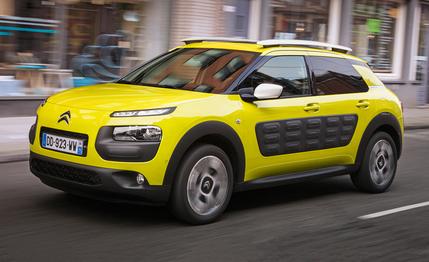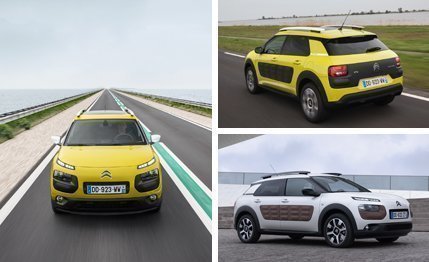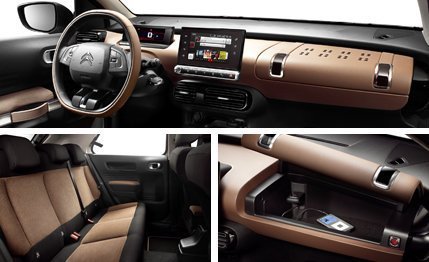 First Drive Review
First Drive Review
If, as amateur philosophers assure us, there is but a fine line between genius and insanity, then it follows that there’s an even subtler distinction between eccentricity and strangeness. Or endearing oddball quirkiness and schizoid, moon-howling madness. It’s a divide on which we find the Citroën C4 Cactus almost perfectly straddled.
Yes, that Citroën, as in French and never gonna come here. However, after seeing the somewhat zaftig concept at the 2013 Frankfurt auto show, we were prepared to swim the Atlantic to have a go in it. Citroën is, of course, the company that made that original tin snail, the 2CV, plus the utterly gorgeous DS and SM, two models so ahead of their time that lazy sci-fi directors still occasionally cast them as cars of the future. Yet in more recent times, it has been relegated to nothing more than PSA Peugeot Citroën’s budget brand, a sort of Gallic Chevrolet, producing cars as stodgy, dull, and frequently as brown as that overrated French onion soup.
 Every existing thing is born without reason, prolongs itself out of weakness, and dies by chance. But the Cactus is kinda cute.
Every existing thing is born without reason, prolongs itself out of weakness, and dies by chance. But the Cactus is kinda cute.
The C4 Cactus may well be an overcompensation. Dull it is not; it’s an SUV-style compact crossover hatchback that has basically been bubble-wrapped. The boxy styling and tall proportions are within the accepted range of European oddness, as are the plastic wheel-arch extensions, used to butch up many a front-drive hatchback with minimal ground clearance.
But the polyurethane “Airbump” padding integrated into the doors, tailgate, and bumpers is the moment the camera pans up to reveal that Michael Jackson is now a zombie. The air-filled capsules are finished in a contrasting color to the bodywork and are slightly soft to the touch. They’re a protective shield, giving the Cactus some immunity from parking knocks and low-speed impacts. If you’ve ever spent time in France, you’ll understand why. And after some extensive testing in a tight British parking lot, we can confirm that they seem to work as intended.

The interior is an odd mix of cheap and premium. The same scratchy plastics Citroën uses for its budget superminis contrast with trinkets like the solid metal hinges for the vast glove box (vast because the front airbags deploy, strangely, from above the windshield) and the leather pull straps on the doors. The instrumentation is limited to a digital speedometer behind the steering wheel—there’s no tachometer—and a central touch screen of baffling complexity.
Power comes from a range of small gasoline and diesel engines, our car fitted with the 98-hp, 1.6-liter turbo diesel. As with most European engines, this one has been tuned for economy with a narrow power band that often leaves it gasping in a boost-free hinterland. Once stoked up, the Cactus has a respectable fleetness. Citroëns were famous for the power of their power assistance, but the Cactus’s steering is surprisingly heavy, as is the clutch pedal for the standard five-speed manual gearbox. Grip levels are modest and roll angles are severe, while the ride quality is just plain disappointing. Over rough surfaces, it feels more like fiberglass insulation than a magic carpet.
So not a 2CV for the new age, but also not a Saxo or a Xsara or one of those other duds from Citroën’s recent époque de malaise. Like raw-milk cheese, the Cactus will never come to the States, but it’s something you should be able to talk about at dinner parties. Pretentiously, of course.